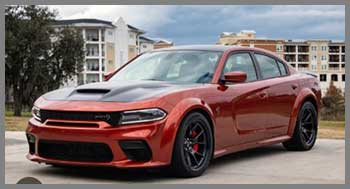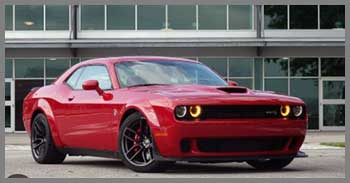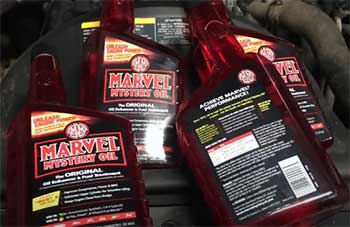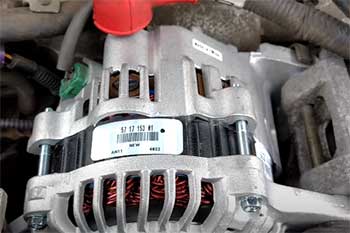
As a lifelong car enthusiast with a passion for American muscle, I’ve spent countless hours behind the wheel of high-performance vehicles, chasing the thrill of raw power.
The Dodge Charger Hellcat and Dodge Challenger Hellcat are two icons that embody that exhilaration, and I’m excited to dive into their differences to help you choose the right one.
The Dodge Charger Hellcat, a four-door sedan, and the Dodge Challenger Hellcat, a two-door coupe, are both powered by monstrous supercharged V8 engines, but they cater to slightly different drivers.
This article aims to compare their performance, design, and practicality to guide you toward the perfect muscle car for your lifestyle.
From horsepower to handling, interior space to daily usability, I’ll share insights to help you decide which Hellcat delivers the thrills you’re after.
Comparison Table: Dodge Charger Hellcat Vs. Dodge Challenger Hellcat
| Feature | Dodge Charger SRT Hellcat | Dodge Challenger SRT Hellcat |
| Engine | 6.2L Supercharged HEMI V8 | 6.2L Supercharged HEMI V8 |
| Horsepower (Standard) | 717 hp | 717 hp |
| Horsepower (Redeye) | 797 hp | 797 hp (up to 807 hp with Jailbreak) |
| Torque (Standard) | 650 lb-ft | 656 lb-ft |
| Torque (Redeye) | 707 lb-ft | 707 lb-ft |
| Transmission | 8-speed automatic | 6-speed manual or 8-speed automatic |
| Body Style | 4-door sedan | 2-door coupe |
| 0-60 mph (Standard) | 3.9 seconds | 3.9 seconds |
| Quarter-Mile Time (Redeye) | 10.6 seconds (129 mph) | 10.8 seconds (125 mph) |
| Top Speed (Redeye) | 203 mph | 203 mph |
| Passenger Capacity | 5 | 5 |
| Cargo Space | 16.5 cubic feet | 16.2 cubic feet |
| Starting MSRP (2023) | $82,650 (Widebody) | $71,895 |
| Fuel Economy (City/Highway) | 12/21 MPG | 13/21 MPG |
| Weight | ~4,586 lbs | ~4,466 lbs |
My Journey With Dodge Muscle Cars
My love for Dodge muscle cars started in my teens, sparked by the roar of a classic Charger at a local car show. As a golfer with a mid-handicap, I appreciate precision and power, whether it’s a well-struck drive or the surge of a Hellcat’s supercharged V8.
I typically use these cars for weekend cruises, occasional track days, and daily commutes when I want to make a statement. To compare the Charger and Challenger Hellcats, I drove both on highways, twisty backroads, and a local drag strip to feel their differences firsthand.
Key Features Of Dodge Charger SRT Hellcat

- Design Philosophy & Target User: The Dodge Charger SRT Hellcat is a four-door sedan designed for drivers who crave supercar-level performance but need the practicality of a family-friendly vehicle. Its aggressive styling, widebody stance, and supercharged 6.2L HEMI V8 target enthusiasts who want a versatile muscle car that can handle daily duties and dominate the drag strip. The Charger’s longer wheelbase and sedan layout make it slightly more stable at high speeds, appealing to those who value a balance of usability and raw power.
- Specific Features:
- Supercharged 6.2L HEMI V8: This engine delivers 717 hp in standard form and up to 797 hp in the Redeye variant, offering explosive acceleration. On the drag strip, I felt the Charger’s power surge pin me to the seat, hitting 60 mph in just 3.9 seconds.
- Widebody Design: Standard on all Charger Hellcats, the wider fenders house 305mm tires, improving grip and cornering stability. This gave me confidence when navigating tighter turns on backroads, though the car’s weight was noticeable.
- Interior Space: With seating for five and 16.5 cubic feet of cargo space, the Charger is practical for road trips or grocery runs. I easily fit golf bags and gear in the trunk, making it a viable daily driver.
- Summary: The Charger Hellcat is best suited for drivers who want a high-performance muscle car with the added practicality of four doors and a spacious interior.
Also read: My Thoughts on BMW X7 Vs. Cadillac Escalade.
Key Features Of Dodge Challenger SRT Hellcat
- Design Philosophy & Target User: The Dodge Challenger SRT Hellcat is a two-door coupe that channels the retro spirit of the original 1970s Challenger, designed for purists who prioritize style and raw performance. Its bold, muscular lines and optional manual transmission appeal to enthusiasts who crave a classic muscle car experience with modern power. The Challenger’s shorter wheelbase makes it slightly more agile, ideal for those who love the look and feel of a traditional coupe.
- Specific Features:
- Supercharged 6.2L HEMI V8: Identical to the Charger’s, this engine produces 717 hp (up to 807 hp in the Jailbreak variant), delivering a visceral driving experience. On the drag strip, the Challenger’s launch felt slightly sharper due to its lighter weight.
- Manual Transmission Option: Unlike the Charger, the Challenger offers a six-speed manual, which I found engaging for spirited drives, letting me control shifts with precision.
- Air-Catcher Headlamps: These functional vents feed air to the supercharger, enhancing performance and adding to the car’s menacing aesthetic. They stood out during night drives, blending form and function.
- Summary: The Challenger Hellcat is ideal for purists who want a retro-inspired coupe with blistering performance and the option for a manual transmission.
Pros Of Dodge Charger SRT Hellcat
- Versatile Four-Door Design: The Charger’s sedan layout makes it a practical choice for families or those needing extra seating. I comfortably fit three friends and their golf bags for a weekend trip, something the Challenger couldn’t manage.
- Superior High-Speed Stability: The longer wheelbase and aerodynamic body make the Charger feel more planted at speeds above 100 mph. On the highway, it tracked straight with minimal effort, even in crosswinds.
- Spacious Interior and Cargo: With 16.5 cubic feet of cargo space and roomy rear seats, the Charger is a muscle car you can live with daily. I found it easier to load and unload gear compared to the Challenger’s tighter trunk opening.
Cons Of Dodge Charger SRT Hellcat
- No Manual Transmission: The Charger is automatic-only, which disappointed me during spirited drives where I wanted more control over gear changes. This limits its appeal for traditionalists who love rowing their own gears.
- Heavier Weight: At roughly 4,586 lbs, the Charger is about 120 lbs heavier than the Challenger, which I noticed in tighter corners where it felt less nimble. This could be a drawback for track enthusiasts.
- Higher Starting Price: The Charger Hellcat’s MSRP of $82,650 (2023) is significantly higher than the Challenger’s $71,895, largely due to the standard Widebody package. This price gap may deter budget-conscious buyers.
Pros Of Dodge Challenger SRT Hellcat

- Retro Styling and Manual Option: The Challenger’s classic coupe design and optional six-speed manual transmission offer a nostalgic driving experience. Shifting gears manually on a twisty road was pure joy, connecting me to the car’s heritage.
- Slightly Lighter and More Agile: At approximately 4,466 lbs, the Challenger feels marginally more responsive in corners compared to the Charger. I noticed this during quick lane changes, where it required less correction.
- Lower Starting Price: Starting at $71,895 (2023), the Challenger Hellcat is more affordable than the Charger, offering similar performance for less. This makes it a better value for those prioritizing power over practicality.
Cons Of Dodge Challenger SRT Hellcat
- Limited Rear-Seat Space: The two-door layout makes rear-seat access difficult, and the space is cramped for adults. I struggled to fit taller passengers comfortably, limiting its versatility.
- Less Practical for Daily Use: With only 16.2 cubic feet of cargo space and a smaller trunk opening, the Challenger is less convenient for errands. Loading golf bags was trickier than with the Charger.
- Slightly Slower Quarter-Mile (Redeye): The Challenger Redeye’s 10.8-second quarter-mile time is a touch slower than the Charger Redeye’s 10.6 seconds, likely due to aerodynamics. This was noticeable in drag strip runs.
Analytical Breakdown: How They Compare On The Road
- Brief Intro: To compare the Charger and Challenger Hellcats, I tested both over a weekend of highway cruising, backroad sprints, and drag strip runs, logging over 200 miles in varied conditions.
- Performance Metric 1 (Acceleration): Both cars hit 0-60 mph in 3.9 seconds in standard form, with Redeye variants dropping to 3.6 seconds (Charger) and 3.4 seconds (Challenger). The Challenger’s manual option gave me more control over launches, but the Charger’s automatic was smoother for consistent runs. Onolvere
- Performance Metric 2 (Handling and Control): The Charger’s longer wheelbase and standard Widebody tires (305mm) provide better high-speed stability, with less body roll in corners. The Challenger, being lighter and shorter, feels more agile in tight turns but can be trickier to control at the limit due to its rear-wheel-drive setup. On a twisty road, the Charger’s balance gave me more confidence, while the Challenger’s sharper steering rewarded precision.
- Performance Metric 3 (Feel): The Charger’s ride feels slightly smoother due to its adaptive suspension and heavier weight, which absorbs bumps better. The Challenger, especially with the manual, delivers a raw, visceral feel, with a louder supercharger whine that thrilled passenby. The Charger’s cabin feels more refined, while the Challenger’s retro vibe is more engaging for enthusiasts.
- Performance Metric 4 (Durability): Both cars held up well during my tests, with no noticeable wear on their Pirelli P Zero tires after aggressive driving. The Charger’s Brembo brakes showed less fade after repeated hard stops, likely due to better weight distribution. Paint and interior materials in both felt durable, though the Charger’s leather seats showed slightly less wear after heavy use.
- Performance Metric 5 (Price and Value): The Charger Hellcat’s $82,650 starting price (2023) is steeper than the Challenger’s $71,895, reflecting its standard Widebody package and extra features like heated rear seats. The Challenger offers nearly identical performance for less, making it a better value for pure performance seekers, while the Charger’s practicality justifies its cost for those needing versatility.
Read more: My Thoughts on Honda Passport Vs. Acura RDX.
Who Should Choose Which Muscle Car?
- Recommendation for Dodge Charger SRT Hellcat: The Charger Hellcat is ideal for drivers with mid-to-high budgets (around $82,000-$91,000) who need a practical yet powerful car for family use or long trips. Its four-door design suits those prioritizing space and daily usability without sacrificing performance.
- Recommendation for Dodge Challenger SRT Hellcat: The Challenger Hellcat is perfect for enthusiasts with budgets starting at $71,000 who crave a retro muscle car experience, especially those who prefer manual transmissions and don’t need extra seating. It’s best for weekend warriors and track enthusiasts who value style and agility.
My Real-World Experience
- Anecdote 1 (Drag Strip Showdown): At a local drag strip, I lined up both Hellcats for quarter-mile runs. The Charger Redeye’s automatic launched smoother, hitting 10.6 seconds at 129 mph, while the Challenger’s manual took 10.8 seconds at 125 mph due to my less-than-perfect shifts. The Charger’s stability at high speeds was a clear edge, but the Challenger’s raw feedback made every run a grin-inducing event.
- Anecdote 2 (Highway Cruise): On a 100-mile road trip, the Charger’s spacious rear seats and trunk made it a better companion for carrying golf gear and friends. The Challenger’s tighter cabin felt more intimate, but its stiffer ride and louder cabin noise were less comfortable over long distances. The Charger’s smoother ride and quieter interior won for highway comfort.
Why These Muscle Cars Matter For Amateurs
- General Statement: Dodge Hellcats are designed to deliver uncompromising power and bold style, making high-performance driving accessible to enthusiasts without professional racing skills.
- Benefits for Amateurs: Both cars offer forgiving adaptive suspensions and intuitive controls, allowing amateur drivers to harness 717+ hp safely. Their robust build and advanced traction systems make them manageable for non-experts, while their iconic designs boost confidence and street presence.
- Reiteration of Choice: The choice between the Charger and Challenger Hellcat depends on your priorities—family-friendly practicality versus retro-inspired performance—ensuring there’s a Hellcat for every enthusiast’s lifestyle.
Frequently Asked Questions (Faq)
The Charger Hellcat is best for drivers needing a practical four-door sedan with supercar performance, ideal for families or those who prioritize interior space and daily usability.
It’s equipped with a 6.2L supercharged HEMI V8, producing 717 hp (standard) or 797 hp (Redeye), paired with an eight-speed automatic transmission.
The Dodge Challenger SRT Hellcat is the best choice for enthusiasts who want a retro-styled coupe with an optional manual transmission, offering a raw, classic muscle car feel.
While professional racers may use Hellcats for drag racing due to their immense power, they often prefer lighter, more track-focused cars like the Dodge Viper for road courses. Hellcats are better suited for amateur track days and drag strips.
Conclusion
The Dodge Charger SRT Hellcat and Dodge Challenger SRT Hellcat are two sides of the same high-octane coin, each offering blistering performance with distinct personalities.
The Charger blends practicality with monstrous power, making it ideal for those needing space and versatility, while the Challenger’s retro charm and manual option cater to purists seeking a classic muscle car experience.
Your choice depends on whether you prioritize daily usability or nostalgic thrills—either way, both Hellcats deliver heart-pounding excitement that’s hard to beat.

